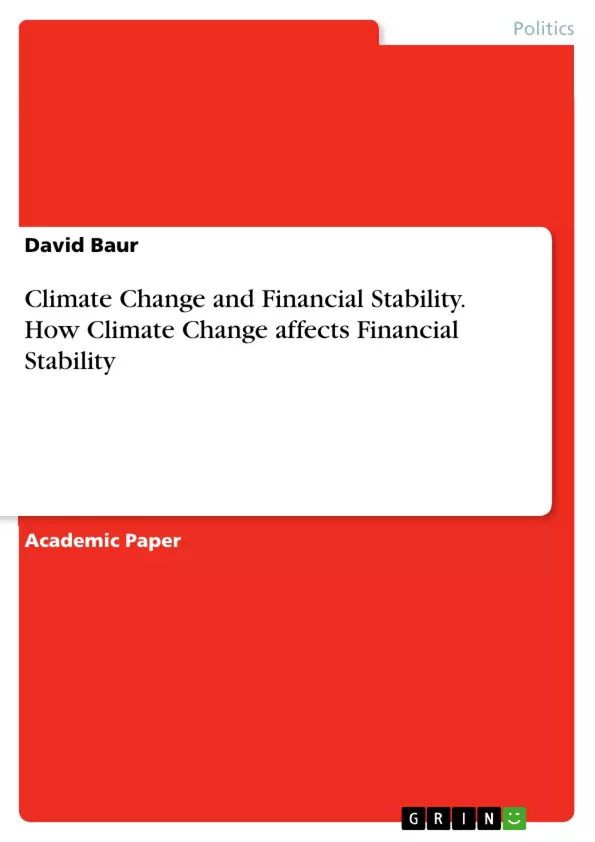This paper addresses the risks posed by climate change in terms of financial instability. The objective is to derive counteractions and recommendations for policymakers and central banks. The derivation of possible appropriate measures on the part of public institutions clarifies that, above all, a high insurance rate and financial reserves are important to buffer the impact of climate-related disasters. It will also be suggested that central banks might consider targeting their monetary policy instruments to environmental sustainability goals. The analysis of the topic furthermore highlighted the fact that investors have so far paid little attention to the risks and costs arising from climate change. Therefore, it should be within the mandate of public authorities and companies to disclose residents and investors expected climate change related risks.
Inhaltsverzeichnis (Table of Contents)
- Introduction
- Key Terms
- Climate Change
- Financial Stability
- Climate Change as a source of financial instability
- Scenario Analysis
- Potential Impact on equity prices
- Inaccuracy of estimated impacts on equity prices
- Solutions
- What can Central Banks do to provide financial stability
- What can Governments do to provide financial stability
- Summary and Outlook
Zielsetzung und Themenschwerpunkte (Objectives and Key Themes)
This paper investigates the risks posed by climate change to financial stability and aims to derive counteractions and recommendations for policymakers and central banks. The analysis focuses on identifying measures to mitigate the impact of climate-related disasters, emphasizing the role of insurance, financial reserves, and the potential for central banks to integrate environmental sustainability into their monetary policy.
- Climate Change and Financial Instability
- Impact of Climate Change on Financial Markets
- Role of Central Banks and Governments in Mitigating Climate Risks
- Financial Stability and Environmental Sustainability
- Disclosure of Climate Change Risks
Zusammenfassung der Kapitel (Chapter Summaries)
- Introduction: Provides an overview of the paper's objective and scope, highlighting the need to address the growing risks of climate change to financial stability.
- Key Terms: Defines the key terms of the paper, including "Climate Change" and "Financial Stability," providing context for the subsequent analysis.
- Climate Change as a source of financial instability: Explores the various ways in which climate change can impact financial stability, highlighting potential risks to financial markets, investments, and the broader economic system.
- Scenario Analysis: Analyzes potential impacts of climate change on equity prices, considering both direct and indirect effects. Examines the limitations of current estimations and emphasizes the importance of accurate assessments.
- Solutions: Presents recommendations for central banks and governments on how to mitigate climate-related risks to financial stability. Discusses potential policy instruments and measures to enhance resilience and promote sustainable finance.
Schlüsselwörter (Keywords)
This paper explores the interconnectedness of climate change and financial stability, focusing on topics such as climate risk, financial risk, central bank policy, and government intervention. It examines the potential impact of climate change on equity prices, advocating for increased awareness and disclosure of climate-related risks to investors and policymakers.
- Citar trabajo
- David Baur (Autor), 2021, Climate Change and Financial Stability. How Climate Change affects Financial Stability, Múnich, GRIN Verlag, https://www.grin.com/document/988688



